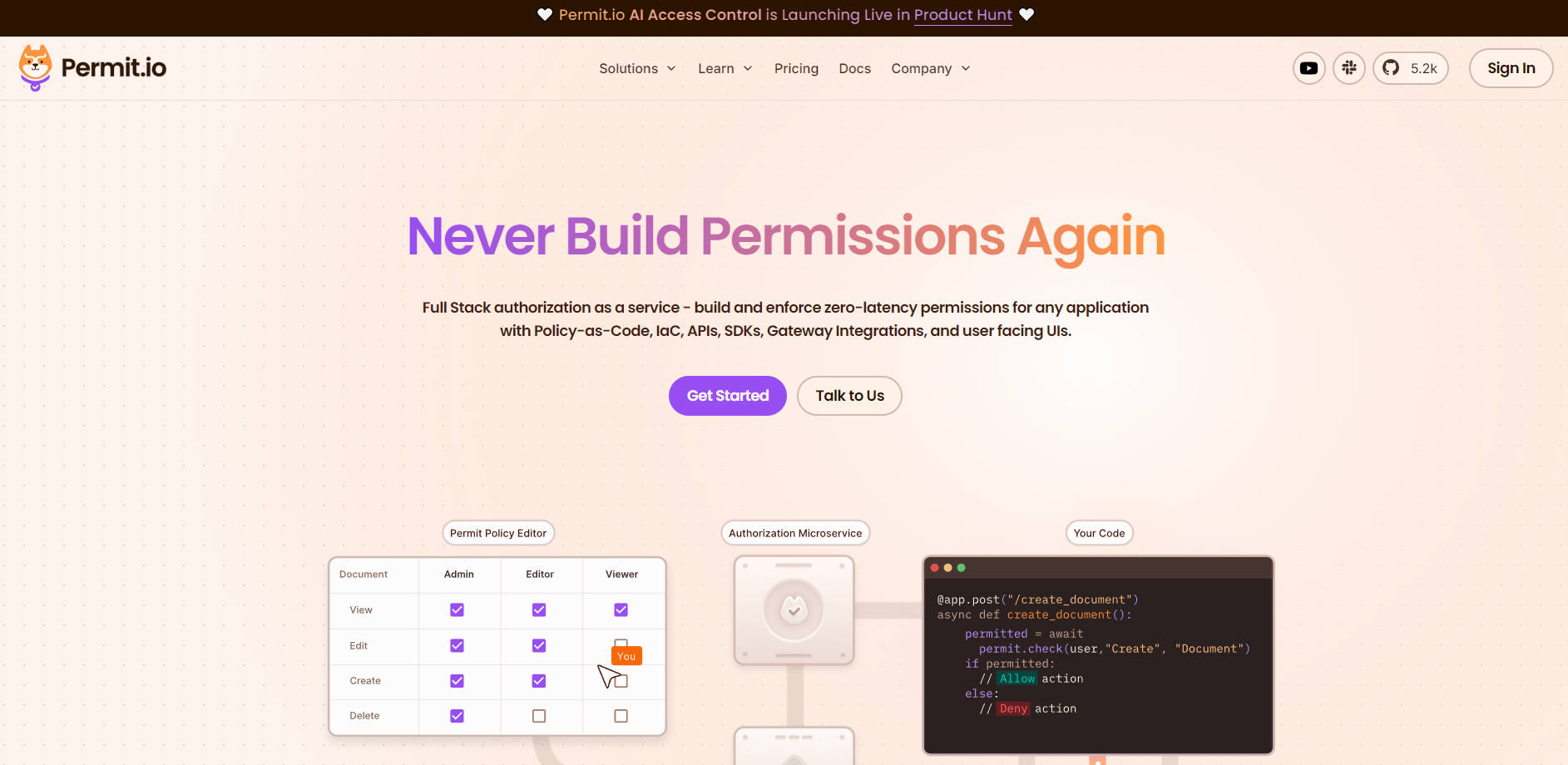
What is Permit.io?
Building and managing user permissions within applications can be a complex and time-consuming task. You need to ensure secure access control, while also providing a seamless user experience. Permit.io offers a full-stack authorization-as-a-service solution, designed to simplify this process. It empowers you to implement and manage permissions, from simple Role-Based Access Control (RBAC) to complex Attribute-Based Access Control (ABAC) and Relationship-Based Access Control (ReBAC), with minimal effort.
Key Features:
⚡️ Implement Rapidly: Integrate authorization into your existing application quickly. Embed
permit.check()into your code, middleware, mesh, or API gateway, with support for multiple languages and frameworks, including NodeJS, Python, Golang, Java, C#, React, Ruby, and Kong.⚙️ Utilize Policy-as-Code: Define and manage your authorization policies as code, leveraging the power of OPA's Rego or AWS' Cedar. This provides transparency, version control, and easier collaboration.
💻 Leverage a No-Code Policy Editor: Empower non-technical team members to manage permissions through an intuitive, user-friendly interface.
🔌 Integrate with Everything: Connect with your existing authentication providers and manage policies using APIs, SDKs, and a Terraform provider.
🔄 Adopt GitOps and Multi-tenancy: Streamline your workflow with built-in GitOps support, enabling policy management through cloud-native Git repositories. Benefit from out-of-the-box multi-tenancy capabilities.
🛡️ Ensure Compliance: Build with confidence that the solution is compliant with HIPAA, SOC2, and other key industry regulations.
Use Cases:
Streamlining Internal Tool Access: Imagine a large organization where employees need access to different internal tools based on their roles. With Permit.io, an HR manager can easily grant access to payroll systems only to authorized personnel, while developers can access code repositories and deployment tools, all defined by clear, manageable roles.
Managing Customer Data Permissions in a SaaS Application: A SaaS platform provider can use Permit.io to control which customers can access specific features or data sets. For example, users on a "Basic" plan might have limited data export capabilities, while "Premium" users can export all data. These permissions can be dynamically adjusted as customers upgrade or downgrade their subscriptions.
Controlling Access in a Microservices Environment: In a complex microservices architecture, Permit.io can manage access between services. For instance, a payment service can be granted permission to access user data from a user profile service, but only for specific fields like billing address, ensuring data privacy and security. The authorization is enforced at zero-latency due to its hybrid architecture.
Conclusion:
Permit.io significantly reduces the complexity of implementing and managing application permissions. It provides a flexible, scalable, and secure solution that adapts to your needs, whether you're building a small application or a large-scale enterprise system. By treating authorization as code and offering a user-friendly interface, Permit.io empowers both developers and non-technical users to collaborate effectively on access control.






